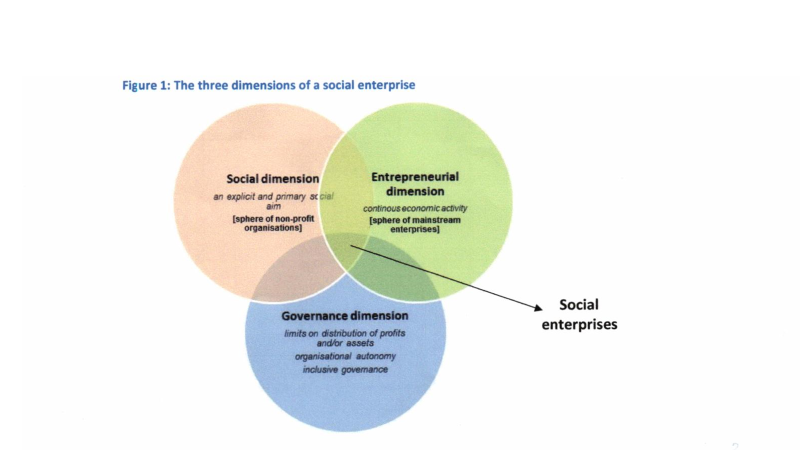Shiho NishiyamaComparative Analysis of the Urban Governance in Divided Society and Social Innovations Created by Social Enterprises in Europe
BackgroundBecause of inexorable expansion of globalization, serious social exclusion, such as urban poverty of inner city areas, unemployment of young people, and cutbacks in welfare services at local level, have grown more severe. Many Cities in capitalized developed counties have faced these problems in common. To tackle with these problems and provide sustainable welfare services, it is important that the civil sector organizations have made partnerships with the government and private market sector to form a style of urban governance through social innovations. According to Cattacin, Zimmer (2016:23), governance is not restricted to describing how decisions are made; it also involves a local structural component, that is limited and embedded in a distinctive local culture and urban context.
Most European governments have searched for new ways to involve citizens and citizen organizations in the governance of publicly financed welfare services. Pestoff, Brandsen, Verschuere (2010) have mentioned the changing relations between citizens and the state from 1980s and guess two alternative scenarios of the welfare states and services in the future Europe, one is New Public Management (NPM, unregulated privatization) or the other is growth of New Public Governance (NPG, with greater welfare pluralism). However, many citizen organizations have faced financial difficulties. Especially in Japan, the institutional infrastructure that supports the civil sector is still underdeveloped by comparison with Europe and the United States. In other words, the civil sector has not yet fully developed at this moment. From the beginning of 1990s, new arrangement has emerged over time in Europe (Defourny and Nyssens 2014:42). These new organizational solutions are often categorized as “Social Enterprises” (SEs), a new entrepreneurial form of combining a social/public benefit aim with market business-like management (Borzaga and Defourny eds. 2001)  Source: European Commission (2015:2)
Many studies in the American SE schools have focused on the issues of organizational management and the innovation of entrepreneurship. However, in Europe, research network like the social enterprise network L’Emergence des Enterprises Sociales (EMES set up in 1996) has conducted a large-scale study of SEs in the aim of dealing with the problem of social exclusion. Defourny and Nyssens (2012) argue that European approach to SEs highlight the central place of governance mechanisms in order to guarantee of organization’s social mission and emphasize the importance of social solidarity and hybrid style of SEs. In Japan, although civil society organizations assumed an important role in providing welfare services and community development, SEs are still infancy. It is valuable to make clear their social significance and potential—determining what kind of social innovation have created the environment for business networks of solving community problems and how community resources can be managed to ensure financial independence—. Research Objectives and MethodsThe purpose of my research is to make clear the mechanism of urban governance which facilitates the emergence and sustainability of social innovation for promoting urban regeneration. Particularly, I will examine the role of Social Enterprises which have great potential for solving the problems caused by globalization and could have leadership in community governance by using community networks, community assets.
In France, these are many civil organizations in the category of “social economy” such as associations, cooperatives, mutual etc. It is indicated that there were approximately 215,000 organizations including in the category of social economy in 2011 published data and there could be estimated between 6,000-28,000 social enterprises in France (EC report 2014:ⅰ-ⅱ). Although there are no formal policies and legal framework specifically defined to support SEs, they have tackled with so many problems, especially social integration through training and employment (EME, Gardin 2003:5). My research method is comparative study which will consider the following issues related to urban governance: 1) the understanding the concept of Urban Governance and social innovations in European context, 2) Methods of managing community resources to build up sustainable urban governance, 3) Mapping of Local environment/culture which promote social innovations, 4) Analysis for type of urban governance from the comparative perspective. ReferencesBorzaga,C., Defourny,J., eds., 2001,The Emergence of Social Enterprise, London and New York: Routledge. Cattacin,S., Zimmer,A., 2016, “Urban governance and social innovations”, in Brandsen,Y., Cattacin,S., Evers,A.,and Zimmer,A.,eds, Social Innovations in the urban context, Springer Open pub.Switzerland, pp.21-44. Defourny,J., Nyssens,M.,2012, “Conceptions of Social Enterprise in Europe: A Comparative Perspective with the United Sates”, in Gidron,B.,Hasenfeld,Y.,eds. Social Enterprises: An organizational Perspective, New York:Palgrave-Macmillan,pp71-90. Defourny,J., Nyssens,M., 2014, “The EMES approach of social enterprise in a comparative perspective”, in Defornurny,J.,Hulhard,L.,Pestoff.V., eds., Social Enterprise and the third sector, Routledge, London and NY, pp.42-65. European Commission, 2015, A map of social enterprise and their eco-systems in Europe,(Synthesis report), including country report France 2014. EME,B.,Gardin,L., 2003, National profiles of work integration social enterprise: France, EMES WP no.03/09. Pestoff,V., Brandsen,T., Verschuere,B., eds., 2010, New Public Governance, the Third Sector and Co-Production, Routledge, London and NY. |
 |
Recherche |  |
FFJ Research Statement |  |
Shiho Nishiyama |
| Inscrivez-vous à notre Lettre en cliquant ici |
*En cas de problème, vous pouvez aussi vous inscrire en envoyant un mail à sympa@ehess.fr, avec pour titre "subscribe ffj_french_news".






